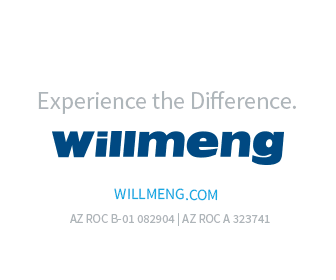'Furniture as a Service' Brings Flexibility and Creativity to Office Spaces

High-growth companies that are rapidly adding staff could be major beneficiaries.
In the competitive world of commercial real estate, leasing agents are constantly looking for ways to stand out from the competition. They’re asking themselves, “how do I generate the results my client needs? How do I increase traffic to the space? How can I give the listing the ‘wow’ factor that will garner the attention of potential tenants?”
As office markets undergo rapid transformations, “furniture as a service” is one tool that could help answer those questions.
The Background
Many U.S. commercial real estate markets are doing well right now; however, there can be challenges when it comes to marrying the right tenant with the right office space. Even more challenging is the reality of historically low vacancy rates, which can result in multiple prospective tenants for the best Class A suites in town.
Additionally, in the past decade, the way employees work has changed dramatically. Landlords now must create more flexible work environments for multiple generations.
Companies experiencing high growth, such as tech startups, need flexibility above everything else. These businesses are past the incubator phase, and they are looking to settle into their own space and add staff as needed.
Tenant brokers are helping clients identify the best use of space based on how their employees function in the workplace. Do a lot of their employees travel for work? Is there collaboration among employees? Do employees desire more private workspaces? All these questions need to be taken into consideration when selecting and creating an optimal work environment.
Where FaaS Comes In
In the midst of a changing office market, landlords need to be responsive when it comes to attracting potential tenants.
Sierra Wireless, a multinational wireless communications equipment designer and manufacturer headquartered in British Columbia, recently worked with JLL to create buzz around its vacant Atlanta sublease.
The 10,000-square-foot space was a result of the company’s acquisition of Numerex, a provider of enterprise solutions related to the internet of things (IoT). In order to quickly lease the space and free up capital, JLL recommended that Sierra Wireless apply the fast and flexible furniture as a service (FaaS) concept to its vacant space.
Originated by CORT to support the evolving commercial real estate industry, FaaS is similar to other services currently on the market, providing furniture on demand for rapidly growing companies.
“Our decision to apply FaaS to our vacant space was based on creating a hip, plug-and-play space centered on flexibility and access,” said Treena Nelson, the senior facilities manager with Sierra Wireless. “It’s not necessarily about the cost savings, but the reduced time investment. At the end of the sublease, I don’t have to worry about selling or storing the furniture, and that’s a big plus for me.”
To appeal to a variety of workplace customers, a few different looks were installed throughout the space. When the new subtenant moves in, they can choose to change out the furniture to align with their goals and needs or return the products if they have their own furniture. The benefit of the FaaS approach is it’s virtually risk-free and focuses on access over ownership.
The FaaS model allows for a great deal of flexibility in the workplace. Users can tap into a big furniture inventory that’s available on demand, design a strategic workplace solution, change things as needed and return the product on their terms.
Similar to a space as a service (SaaS) model, the experience is about access, not ownership. Think of FaaS as furniture in the cloud; it’s there when you need it and gone when you don’t.
This approach offers several different options and pricing models depending on selections. Using a fairly standard 12-month term, the cost is around $6-$10 per square foot.
There are many factors driving costs. These include preferred or required density of the space, power options and furniture selection. Also popular is the option to invest costs into the operating expenses rather than the capital expenses.
Preparing for What’s Next
Sublease spaces in general are changing because there is now more interest than ever before in short-term flexible office spaces.
A recent study, “JLL Trends – Flex Space,” suggests that there will continue to be significant shifts in how office space is used in the near future. Currently, flex space inventory accounts for less than 5% of U.S. office stock. That number could skyrocket to approximately 30% of the market by 2030.
As the commercial real estate landscape shifts, there will be natural changes in how services and products such as furniture are used. For example, when a firm leases a space for two or three years, the discussion about purchasing assets changes. It may make more sense to rent than to buy.
If a company is project-based and the team makeup shifts from project to project, maintaining a flexible workspace might be best served by furniture that’s changeable.
In the start-up community, many companies work to conserve their capital and instead invest in growth. This segment will certainly push commercial real estate to provide a greater number of flexible options.
Or in a case such as Sierra Wireless and its sublease office, the ability to outfit for flexibility and lease the space more quickly can be the key motivation.
As the workplace continues to evolve, expect an increase in sublease spaces available with FaaS options taking the place of dusty suites crammed with leftover furniture. Commercial real estate professionals who buy in to this trend early may be more agile in times of disruption.
Joey Kline is a vice president at JLL, specializing in office brokerage and tenant representation.







